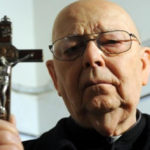 Politics
Politics  Politics
Politics  Humans
Humans The 20th Century’s 10 Most Famous Centenarians
 History
History 10 Influencers Who Lived Centuries before Social Media
 Miscellaneous
Miscellaneous 10 Ancient Etiquette Rules You Never Knew Existed
 Our World
Our World Planet Earth’s 10 Most Hardcore Natural Creations
 Movies and TV
Movies and TV 10 Times Twin Movies Competed with Each Other
 The Arts
The Arts 10 Masterpieces Plucked from the Artist’s Subconscious
 Crime
Crime 10 Fascinating Facts about Rikers Island
 Pop Culture
Pop Culture 10 Things You Might Not Know about Dracula
 Weird Stuff
Weird Stuff 10 Everyday Activities That Were Once Considered Illegal
 Politics
Politics 10 U.S. Presidents Who Cheated on Their Wives
 Humans
Humans The 20th Century’s 10 Most Famous Centenarians
 History
History 10 Influencers Who Lived Centuries before Social Media
Who's Behind Listverse?

Jamie Frater
Head Editor
Jamie founded Listverse due to an insatiable desire to share fascinating, obscure, and bizarre facts. He has been a guest speaker on numerous national radio and television stations and is a five time published author.
More About Us Miscellaneous
Miscellaneous 10 Ancient Etiquette Rules You Never Knew Existed
 Our World
Our World Planet Earth’s 10 Most Hardcore Natural Creations
 Movies and TV
Movies and TV 10 Times Twin Movies Competed with Each Other
 The Arts
The Arts 10 Masterpieces Plucked from the Artist’s Subconscious
 Crime
Crime 10 Fascinating Facts about Rikers Island
 Pop Culture
Pop Culture 10 Things You Might Not Know about Dracula
 Weird Stuff
Weird Stuff 10 Everyday Activities That Were Once Considered Illegal
10 People Who Coined Paranormal Terms
There are a lot of terms that you can expect to hear frequently if you choose to delve into the seamy underbelly of the unknown, the unclassified, the undocumented, and the paranormal. Those terms all started somewhere, and the people who coined them have some fascinating stories to tell.
10 Vincent Gaddis
The ‘Bermuda Triangle’

The Bermuda Triangle is one of the most famous supposedly mysterious spots on the planet, and its history goes back pretty far, long before the ill-fated Flight 19 left Florida and disappeared into the mysterious waters of the triangle. Even Christopher Columbus made notes about the strange lights and even stranger compass readings that he was getting within the confines of what would be called the Bermuda Triangle much later.
The term itself only dates back to 1964, when it was used by the writer Vincent Gaddis in an article for Argosy magazine. The story of the missing Flight 19 was on the cover, and Gaddis’s dubbing of the area as “the Bermuda Triangle” gave the myth a different sort of life. In the article, Gaddis recounted some of the most famous disappearances of the area, including the tanker Marine Sulphur Queen in 1963 and two KC-135 Air Force tanker jets the same year. He went on to say that more than 1,000 people had disappeared there over the course of the previous two decades, with the US military publicly claiming that they were “baffled.” Gaddis wrote, “The Bermuda Triangle underlines the fact that despite swift wings and the voice of radio, we still have a world large enough so that men and their machines and ships can disappear without a trace.”
Part of the problem with the travel conditions in the Bermuda Triangle is not just the weather, but the fact that it really is the center of some sort of natural phenomenon, being one of the few places where true north and magnetic north sync up, which can affect compass readings. But when Gaddis used the term “Bermuda Triangle” alongside words like “menace” and a mysterious weather abnormality he called “a hole in the sky,” the name elevated the area into something more ominous, even though the area doesn’t actually have more disappearances than any other heavily traveled ocean areas.
9 Charles Richet
‘Ectoplasm’
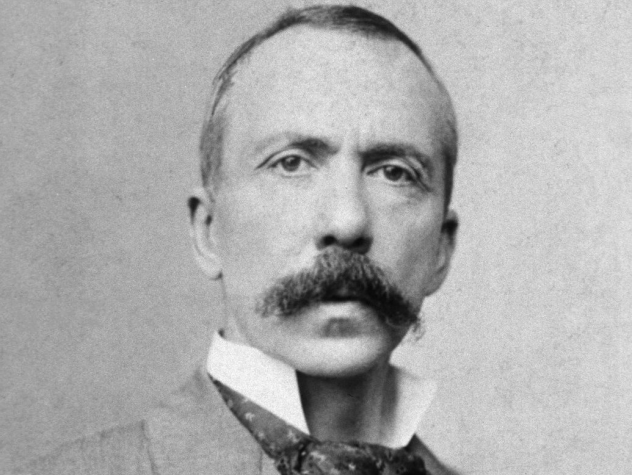
Ectoplasm is essentially the stuff that ghosts are made of. During the Victorian era, seances were all the rage. With a little deft sleight-of-hand, a good medium could convince the audience that they were channeling spirits in a very physical form. Everyday materials like cheesecloth (and some not-so-everyday ones like bits of animals) doubled for a mysterious, otherworldly substance that Charles Richet first called “ectoplasm.”
Before anyone condemns the idea as mystic nonsense, it’s important to note that Richet had serious scientific credentials. The winner of a Nobel Prize for his work on anaphylaxis and allergens (not to mention some pioneering work on the nervous system and anesthesia), his interest in ectoplasm was scientific. Scientists already knew, after all, that living cells had plasma in them. It didn’t seem too far-fetched, then, to believe that there were other types of plasma making up other parts of the universe.
The idea of ectoplasm had been well documented in seances dating back to at least the 1870s, but Richet didn’t officially coin the term until his 1923 book, Thirty Years of Psychical Research: Being a Treatise on Metaphysics. He described it as a tentacle-like, filament-like substance that came from somewhere on the medium’s body but didn’t have to remain connected to the person. He also noted that it was a very personal thing and was a substance that seemed to reach out to feel its way around an unfamiliar, mortal world.
Richet didn’t make the word up, either; it had a legitimate scientific usage before it came to be associated with the presence of spirits. According to the Oxford English Dictionary, it first showed up in 1883, in reference to a description of the jelly-like body of the amoeba.
8 Ivan T. Sanderson
‘Out-Of-Place-Artifacts’ (‘Ooparts’)
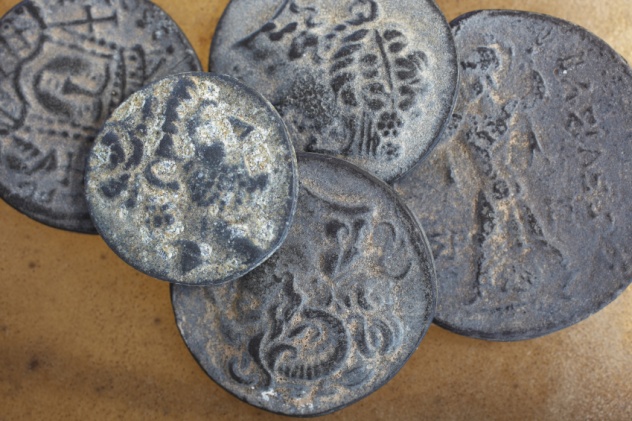
Like countless other paranormal researchers and believers in things out of this world, Ivan T. Sanderson started out in legitimate science. Educated at Eton and Cambridge, he traveled the world, collecting and cataloging specimens for noted British museums, and even worked for the British Ministry of Information during World War II. During the war, he was stationed in New York City, and it was there that his life seemed to take a detour from legitimate science into the more glamorous realm of the public eye. Starting out as a respected nature writer, he moved on to television and radio and discovered that the idea of the unknown, the paranormal, and the monstrous often provided better stories to tell than what he’d been doing all along. By the 1960s, his work was almost exclusively in nontraditional science. He made Bigfoot a household name, established the Society for the Investigation of the Unexplained, and published his own magazine.
Not only did he elevate the idea of Bigfoot and help convince people with way too much money to fund hunts for the elusive creature, he also coined the term “Ooparts,” or “Out-of-Place-Artifacts,” to refer to objects that couldn’t be explained away by conventional science. Sanderson claimed that these Ooparts were found all over the Earth, often embedded in the geological record, and their appearance in places where they shouldn’t be was clearly a clue that there was something more going on than we knew about.
Writers like David Hatcher Childress have gone on to make the idea of Ooparts one of the cornerstones of the paranormal and the unexplained. Citing incidents like ancient Roman coins showing up in Latin American graves and treasure troves or stones with Assyrian writing cropping up in the Americas as proof that countless civilizations managed to cross the Atlantic, Childress and others have no shortage of otherworldly explanations for Sanderson’s Ooparts.
7 John Wall, Lucien Blancou & Bernard Heuvelmans
‘Cryptozoology’ And ‘Cryptids’
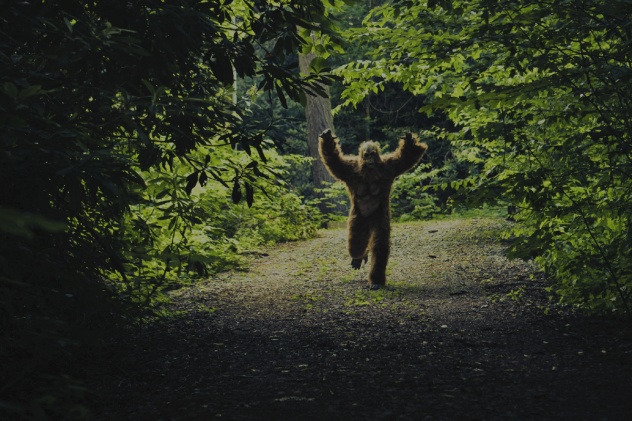
Cryptozoology is arguably one of the most well-known unscientific sciences, and the origins of the name are as enigmatic as the creatures it claims to study. The first time the term was ever used in print is fairly recent—in a 1959 book written by a French author called Lucien Blancou. Blancou’s dedication stated that he was writing for Bernard Heuvelmans, whom he credited as the “master of cryptozoology.” Heuvelmans himself claimed that he was the one that came up with the term, but another person—Ivan T. Sanderson—had admittedly come up with the same word at the same time in another part of the world.
In another version of the story, Heuvelmans said it was Sanderson who first came up with the word on his own and should get the credit for using it first. But it might not be as clear-cut as that, either, with a different form of the word, “cryptozoological,” used in a 1941 review of a book called The Lungfish, the Dodo and the Unicorn. Written by Willy Ley and subtitled “An Excursion into Romantic Zoology,” the book was a compilation of creatures both fantastic and mythological and a collection of “facts” pertaining to these magical beasts.
While the terms “cryptozoologist” and “cryptid” might seem to go hand-in-hand, “cryptid” wasn’t coined until much later. In 1983, John Wall wrote a letter to the International Society of Cryptozoology and proposed the term as a sort of catch-all word that could not only be applied to any and all unknown or unusual beasts, but as one that sounds a bit more scientific than the words used before.
The definition of “cryptid” continued to be argued for years after. It was only in 2004 that the community agreed on one that organized potential cryptids into four different groups—members of a species appearing outside their accepted range, individuals of a known species showing a distinct and undocumented variation (such as in size or color), a creature bearing a resemblance to an extinct species, and of course, a creature previously unknown and undocumented.
6 Jenny Randles
The ‘Oz Factor’
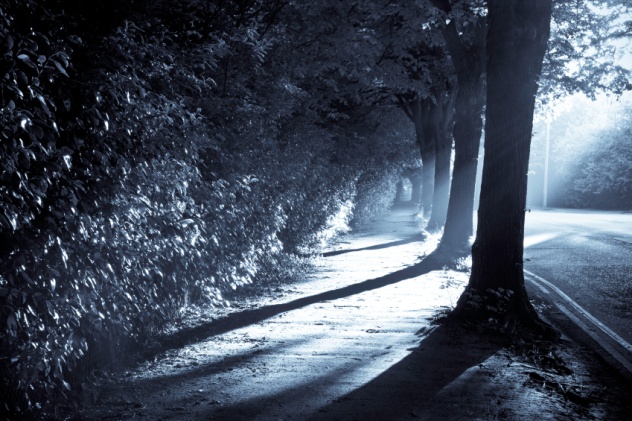
There are several things that often come up when people recount alleged encounters with a UFO, and one of them is a weird sense of calm that comes over them while they’re looking up at something extraterrestrial. In 1983, British author and paranormal researcher Jenny Randles named this dissociative mental state the “Oz Factor,” after the imaginary land of Oz.
According to Randles, the Oz Factor says loads about what’s going on during these encounters, and she thinks that the calm that descends over some people is a clear sign that the aliens aren’t just targeting the person’s physical form, but their consciousness as well. She developed the term while investigating a close encounter that involved two men. One saw an alien craft, while the other saw nothing. No one else in the area saw anything, either, and rather than doubt the first witness’s credibility, Randles took another approach. She started to develop the idea that there was a “zone of influence” around alien craft. Only those within the zone were able to see—and remember—the craft being there at all.
The more research she did and the more people she interviewed, the more she began to see patterns in the witnesses’ claims. (As long as she was asking them the right questions, according to her.) There was a sort of mental tingle, a sense that something was calling to them, the fading away of ambient sounds, and a sense of complete isolation. She found that each encounter had an average of only 2.6 witnesses, and to her, that suggested that each of those encounters was focused only on the individual and removing them (or their consciousness) from reality in a way that interrupted the normal flow of information between the brain and the world outside, much like heading off to the magical world of Oz.
5 Alfred Watkins
‘Ley Lines’
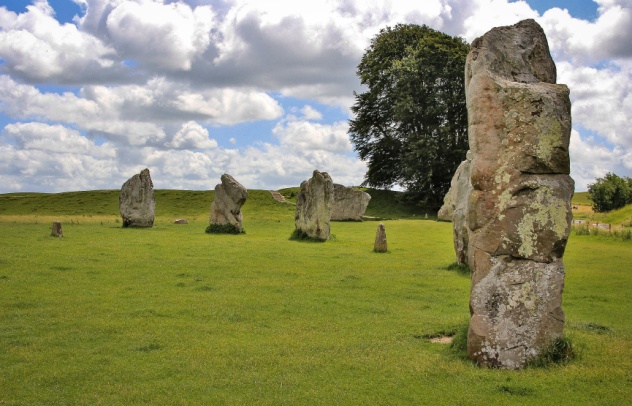
Today, ley lines are the fanciful stuff of the paranormal, referring to a network of lines that cross the globe and connect faraway places through magical energy. Whether they’re the stuff of New Age claims, dowsing, or magnetism, ley lines are definitely the stuff of the mystical, and they absolutely didn’t start out that way.
In 1921, Alfred Watkins was riding through the English countryside when he stopped at the top of a hill. He was struck by the extraordinary pattern of the landscape below, which was laid out in a series of straight paths. Those paths, he discovered, connected everything from ancient barrows to old churches, from standings stones to centuries-old trees. Watkins would describe that moment as a “flood of ancestral memory,” and he’d go on to map these straight lines that radiated out from all these incredibly important locations. By September 1921, he gave his first lecture on these lines, which he called “ley-lines,” and he pitched the idea that they were all over the country.
His ideas were pretty deeply rooted in regular history. Watkins suggested that these ley lines were the tracks of ancient people who had once walked the land. They were the remains of ancient trade routes running between major locations, which he named “beckon sites.” Along the ley lines were mark-points, tracing the ancient paths across the landscape, and they were traversed by craftsmen wandering from one village to another and by religious pilgrims going back and forth between churches, cairns, and monoliths. They were laid out by men tracing the shortest distance between two points—a straight line.
When Watkins died in 1935, his Straight Track Club, a group dedicated to mapping these ley lines, died with him. They’d failed to get mainstream archaeology to accept their theory, but when John Mitchell learned of it, he turned ley lines into a series of mystical connections mapping an energy grid and connecting Britain’s ancient sites.
4 Ivan T. Sanderson (Again)
The ‘Devil’s Graveyard’ And The ‘Vile Vortex’

In the early 1970s, Ivan T. Sanderson ran first a diagram and then an article in speculative magazines detailing what he called the “12 Vile Vortices.” The title of the article, “The Twelve Devil’s Graveyards Around the World,” was just as sensational as you’d imagine, and it built on his previous work on the Bermuda Triangle. According to Sanderson, these 12 places were locations across the globe that had an uncannily high rate of disappearances of planes, ships, and people, and those disappearances were identified by the patterns of electromagnetic vibrations that they gave off.
The areas, he went on to say, form a definite pattern themselves. Located at 72-degree intervals across the globe, the 12 are the North and South Poles, the Bermuda Triangle, the Algerian Megalithic Ruins near Timbuktu, Karachi in Pakistan, the Devil’s Sea Triangle near Iwo Jima, Hamakulia (southeast of Hawaii), the megaliths of Sarawak in Borneo, Nan Madol in Micronesia, the center of Inca culture in South America, Easter Island, and Gabon in West Africa. When his article and his theories went public, a group of researchers from the Soviet Union released a subsequent paper proposing the idea that the world could be laid out in the form of a dodecahedron (think of a 12-sided die) and that the 12 vortices fit neatly within the model.
David Hatcher Childress also theorized as to what these vile vortexes might mean in his attempts to map what he called the “world grid.” It’s been suggested that all sites where electromagentic anomalies are regularly recorded in addition to mysterious disappearances and other sorts of activity are weak spots and the locations of doorways to other dimensions. When the doorways of the vile vortexes open, said writer Nicholas R. Nelson, people disappear.
3 J. Allen Hynek
‘Close Encounters’
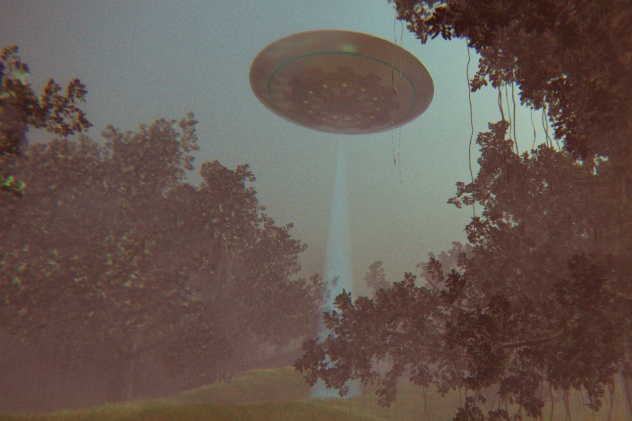
The term “close encounters” was made famous by Close Encounters of the Third Kind, and it was coined by astronomer Josef Allen Hynek. There are seven different kinds of encounters, ranging from the First Kind (seeing objects in the sky) to the Seventh Kind (mating and the creation of a human-alien hybrid), and the story of how the terms came about is rather odd.
Hynek was a consultant on Project Blue Book, the notorious US Air Force project of investigating UFO sightings. Hynek was one of the chief skeptics involved, although he’d later come out as one of the major supporters of the need to investigate UFOs with the same diligence given to any other scientific phenomenon. Well before Project Blue Book, he had long been fascinated by the occult and the esoteric writings of the Rosicrucians, and in 1948, he was a part of Project Sign, the Air Force’s initial investigation into UFOs and attempt to discover the truth about what they believed to be top secret Soviet technology.
Hynek spent decades debunking sightings as meteors, planets, and weather balloons, but during his interviews of countless military pilots, he’d later report that he was starting to have a change of heart. By 1966, he had completely separated himself from the programs and called for the organization of a committee of scientists to study what he considered to be a very real threat.
Hynek took a massive hit to his credibility in what had been his field for decades. By 1968, peers who had previously respected him were viewing him with greater and greater contempt, and his 1972 book, The UFO Experience: A Scientific Inquiry, was a failed attempt at getting some of that respect back. In the book, Hynek detailed his classification system for close encounters in an attempt to bring some scientific credibility to the study of UFOs, but astronomers were having none of it, especially when Hynek joined the television circuit and a panel of experts formed by The National Enquirer.
2 Jean Paul
‘Doppelganger’
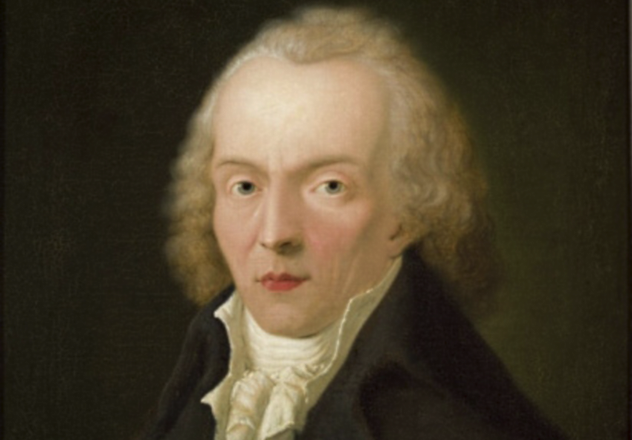
The idea of a doppelganger is an undeniably creepy one, literally meaning “one who goes twice.” As far back as ancient Rome, a form of doppelganger was used when an emperor died. While the emperor’s real body went through all the indignities that went along with death and cremation, and effigy was constructed to symbolically be attended by doctors, mourned by subjects, and finally cremated in public. The same process was done in medieval Europe, but it wasn’t until the 1790s that writer Jean Paul coined the term “doppelganger.”
In 1796, Jean Paul wrote Siebenkas, the story of two men so identical that they were able to exchange their names, leaving no one the wiser. The men, Siebenkas and Leibgeber, were as opposite in personality as they are identical in appearance, and when they married some unsuspecting women, hilarity of the 18th-century variety ensued.
Jean Paul had long been obsessed with the idea of the disconnect between appearance and personality, writing some eerie stuff that sent his protagonists into situations that completely divided the mind and the body. In The Invisible Lodge, the as-yet-unnamed doppelgangers were wax dolls that duplicated all of the novel’s human characters in an attempt to show just how disconnected our minds and our bodies can be. In another book, Hesperus, the main character makes a wax double of himself and descends into a complete mental disconnect between bodies. By his third book, he’s on to Sienbenkas, and it’s not easy reading.
The book was so bizarre that it has the dubious honor of being banned by censors, who deemed it incomprehensible and pointless. The term “doppelganger” stuck, however . . . sort of. Originally, the two men are called doppeltganger, which Jean Paul called “the name for people who see themselves.” The term “doppelganger” was actually used to describe two courses in a meal, served together as opposed to one after the other.
1 Albert Bender And Gray Barker
‘Men In Black’
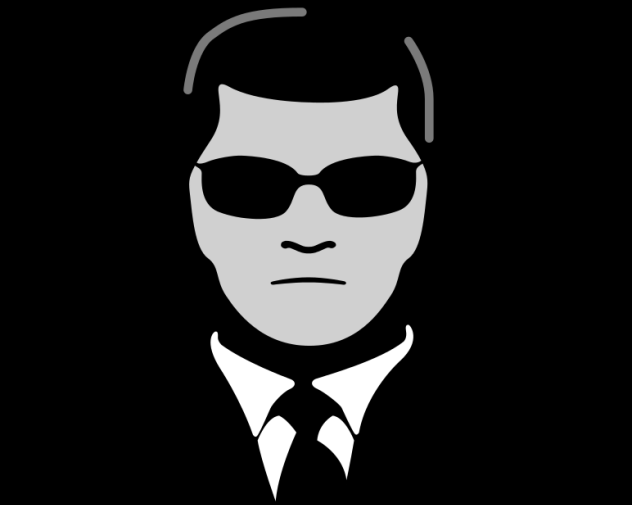
The Men in Black are arguably among the eeriest of all figures of modern folklore. They’re clearly military, they show up after a close encounter, and those who see them describe them as having certain physical characteristics that perhaps suggest whoever—or whatever—created them had heard some stories about what it meant to be human but hadn’t really bothered to experience it firsthand.
But they started out as a bit of a joke—and a cruel one, at that.
In the 1950s, a man named Albert Bender formed the International Flying Saucer Bureau and started publishing the magazine Space Review. The organization, official-sounding as it was, had only one member—Albert Bender. He ran it out of the home he shared with his stepfather, from a skull-decorated room that he called “The Chamber of Horrors.” He soon hired someone to fill the role of chief investigator, a man named Gray Barker.
By this time, Project Blue Book had released its findings that UFOs really weren’t the threat that some people, including independent organizations like Bender’s, were making them out to be. While his one-man operation wasn’t named in particular, the report sent Bender spiraling off the deep end that he’d already been teetering on. When he notified the local newspaper that he was shutting down his organization, he also told them that he had been visited by three men in dark suits who threatened him and told him that he’d better stop publishing information about UFOs if he knew what was good for him.
Gray Barker knew a good story when he saw one, and in 1962, he convinced Bender to write a book detailing what had happened to him. Flying Saucers and the Three Men detailed Bender’s experiences astrally projecting himself into an alien base in Antarctica, where he met aliens (who had three different genders) and then received his vision of the government-type men. This became a firsthand account of a phenomenon that Barker had already run with. He wrote his own book, They Knew Too Much About Flying Saucers, in which he made up the entire story about the Men in Black.
There’s something of a sad footnote to this story: Barker saw his work as entertainment rather than anything that anyone would take seriously, but in order to build up the myth behind the Men in Black, he even went as far as sending letters to other UFO publications on stationery that appeared to be from the US Department of Defense and the imaginary Men in Black. Bender, meanwhile, was possibly suffering from genuine delusions and some sort of paranoia that made him think the Men in Black really were out to get him, and that delusion was spread to pop culture by one enterprising writer.







